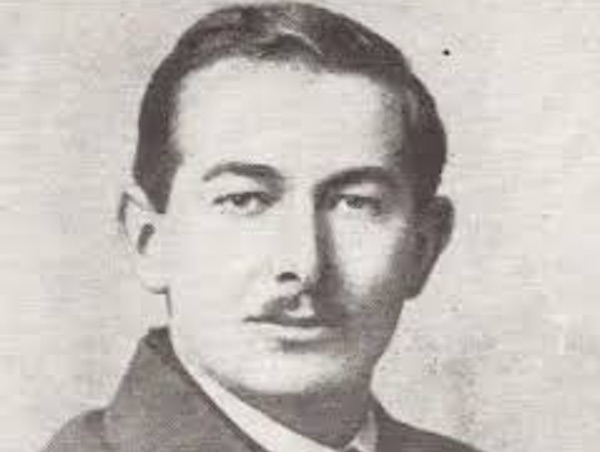
The dramatic death took place 100 years ago this week of a revolutionary who became synonymous with Ireland’s fight for independence (from stairnaheireann.net).
“Come on, he cried, Come show your hand, you have boasted for so long,
How you would crush this rebel band with your armies great and strong.
‘No surrender’, was his war cry, ‘Fight on lads, no retreat’ –
Brave Treacy cried before he died, shot down in Talbot Street.”
Irish Revolutionary, Seán Treacy was born at Solohead in Co Tipperary. As a teenager, he joined the Irish Republican Brotherhood and the Irish Volunteers. Because of his involvement with the Irish Volunteers, he was jailed by the British in August 1917 but was released in November. He was jailed again in February 1918 but was released in June 1918. Around this time, the Irish Volunteers became known as the Irish Republican Army or IRA.
On 21 January 1919, a load of explosives was being transported to Soloheadbeg quarry in Co Tipperary under police guard. A small contingent of the IRA lead by Treacy and Dan Breen, ambushed and captured the explosives. During the attack, two policeman were killed. The Solohead Ambush is considered to be the start of the Irish War of Independence or the Black and Tan War.
During the next 21 months, Treacy was involved in numerous attacks against the British and was one of the most sought after members of the IRA. On 14 October 1920, he was spotted on Talbot Street in downtown Dublin and was killed in a gun battle with the British in which two soldiers and several bystanders were also killed. No wonder a British kill squad tracked him down on the streets of Dublin; with a camera crew in tow, and gunned him down on Talbot Street. They already knew the value of a good photo opportunity.
Treacy is remembered as one of those that fired the first shots of the war. He is buried in Kilfeacle Cemetery which is about six miles east of Tipperary. His death sent alarm bells through the upper echelons of the IRA leadership.
A commemorative plaque above the door of 94 Talbot Street, now the Wooden Whisk and directly across from Talbot House, commemorates the spot where Treacy died. His coffin arrived by train at Limerick Junction station and was accompanied to St Nicholas Church, Solohead by an immense crowd of Tipperary people. He was buried at Kilfeacle graveyard, where, despite a large presence of British military personnel, a volley of shots was fired over the grave.
Seán Treacy’s death is remembered each year on the anniversary of his death at a commemoration ceremony in Kilfeacle.
In Thurles, Co Tipperary, Seán Treacy Avenue is named after him. The town of Tipperary is home to the Seán Treacy Memorial Swimming Pool, which contains many historic items related to the Easter Rising and the War of Independence, and a copy of the Proclamation of the Irish Republic. The Seán Treacy GAA Club takes his name in honour and represents the parish of Hollyford, Kilcommon and Rearcross in the Slieve Felim Hills, which straddle the borderland between the historical North and South Ridings of Tipperary. He is remembered in many songs. The song Seán Treacy, also called Tipperary so Far Away, is about Treacy’s death and is still sung with pride in west Tipperary.
![[Irish Republican News]](https://republican-news.org/graphics/title_gifs/rn.gif)
![[Irish Republican News]](https://republican-news.org/graphics/title_gifs/harp.gif)

